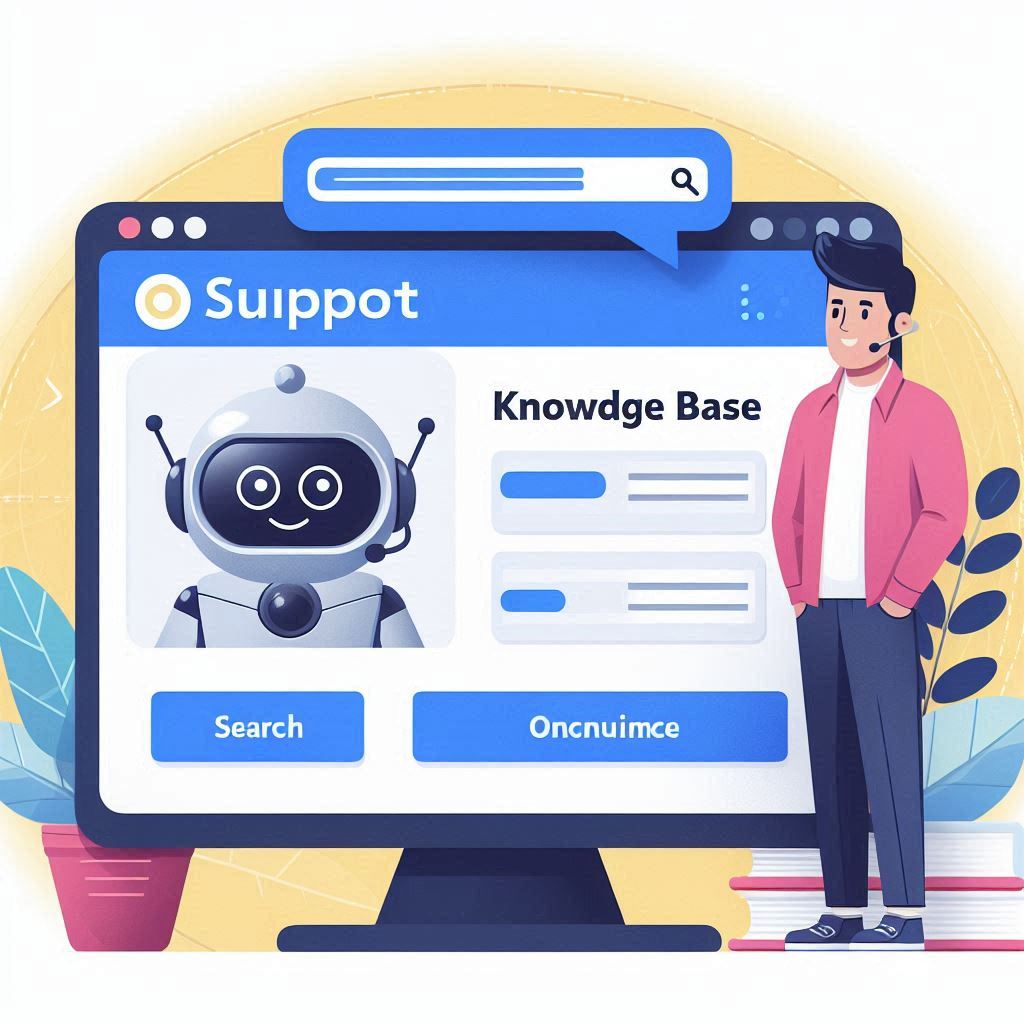The Role of Customer Advocacy in Software Development In today’s competitive software market, understanding and prioritizing customer needs is more crucial than ever. Customer advocacy is a powerful concept that emphasizes the importance of listening to customers and integrating their feedback into the software development process. This approach not only enhances product quality but also fosters stronger relationships between businesses and their customers. In this article, we will explore the role of customer advocacy in software development, its benefits, and how to effectively implement it. 1. Understanding Customer Advocacy Definition Customer advocacy refers to the practice of putting customers at the center of decision-making processes. It involves actively listening to their feedback, understanding their pain points, and advocating for their needs throughout the software development lifecycle. The Importance of Customer-Centricity A customer-centric approach helps ensure that software solutions are tailored to meet actual user needs rather than assumptions. By prioritizing customer voices, organizations can create products that provide real value, resulting in higher satisfaction and loyalty. 2. Benefits of Customer Advocacy in Software Development Improved Product Quality When customer feedback is integrated into the development process, teams can identify and resolve potential issues early on. This proactive approach leads to higher quality software, as products are continuously refined based on real-world usage and preferences. Enhanced User Experience Customer advocacy helps teams understand user journeys and pain points, allowing them to design intuitive and user-friendly interfaces. By prioritizing usability and addressing user concerns, software becomes more accessible and enjoyable for end-users. Increased Customer Loyalty When customers feel heard and valued, they are more likely to develop a sense of loyalty toward the brand. By advocating for their needs, companies can build long-term relationships with customers, resulting in repeat business and referrals. Faster Time to Market Integrating customer feedback into the development process can streamline decision-making and reduce the likelihood of major revisions later on. This can lead to quicker iterations and faster time to market for software updates and new features. Enhanced Innovation Customer advocacy encourages teams to explore innovative solutions to meet evolving user needs. By understanding the challenges customers face, teams can brainstorm creative ideas and features that enhance the software’s overall value. 3. Implementing Customer Advocacy in Software Development Establish a Customer Advocacy Team Create a dedicated team or appoint a customer advocate responsible for gathering and analyzing customer feedback. This team should work closely with product managers, developers, and other stakeholders to ensure customer voices are heard at every stage of development. Regular Feedback Collection Implement various methods to collect customer feedback, such as surveys, interviews, focus groups, and usability testing. Encourage users to share their experiences and suggestions, and create a culture where their input is valued and acted upon. Integrate Feedback into Development Cycles Utilize agile methodologies to incorporate customer feedback into development cycles. Regularly review feedback during sprint planning and retrospectives, and prioritize features or improvements based on customer insights. Communicate with Customers Keep customers informed about how their feedback is being utilized. Share updates on new features, improvements, or bug fixes that have been implemented based on their suggestions. This transparency reinforces the importance of their advocacy and fosters trust. Measure Success Establish metrics to evaluate the impact of customer advocacy on software development. Monitor customer satisfaction scores, retention rates, and user engagement to assess the effectiveness of advocacy initiatives. Use this data to refine strategies and continuously improve processes. 4. Building a Customer Advocacy Culture Empower Employees Encourage all team members, not just those in customer-facing roles, to champion customer advocacy. Provide training on empathetic listening and customer engagement techniques, ensuring that everyone understands the importance of prioritizing customer needs. Recognize and Reward Customer Advocacy Acknowledge employees who actively advocate for customers and demonstrate a commitment to understanding user needs. Celebrating these efforts can motivate others to prioritize customer feedback in their work. Create Customer-Centric Policies Develop company policies that prioritize customer needs in decision-making processes. Ensure that all departments, from marketing to product development, align their strategies with customer advocacy principles. 5. Conclusion Customer advocacy plays a pivotal role in shaping successful software development processes. By prioritizing customer feedback and integrating their insights into decision-making, businesses can create products that deliver exceptional value and user experiences. The benefits of customer advocacy extend beyond improved software quality; they include enhanced loyalty, increased innovation, and a culture of empathy within organizations. As software development continues to evolve, embracing customer advocacy will be essential for businesses aiming to thrive in a competitive landscape. By fostering strong relationships with customers and continuously advocating for their needs, organizations can not only enhance their products but also cultivate a loyal and engaged user base.
How to Create a User-Friendly Support Portal for Software
How to Create a User-Friendly Support Portal for Software A user-friendly support portal is essential for software companies to enhance customer satisfaction and ensure effective problem resolution. By providing easy access to resources, information, and assistance, a well-designed support portal can empower users to find solutions quickly and efficiently. This guide outlines the key steps to create a user-friendly support portal for your software. 1. Define the Purpose and Goals Identify User Needs Before designing the portal, understand the specific needs of your users. Conduct surveys, interviews, or usability testing to gather insights into what users expect from a support portal. Identify common issues, frequently asked questions (FAQs), and desired resources. Set Clear Objectives Establish clear goals for the support portal. These might include reducing the number of support tickets, improving response times, or increasing user satisfaction. Having defined objectives will guide the design and functionality of the portal. 2. Design an Intuitive User Interface Simple Navigation Create a clean, straightforward navigation structure that allows users to find information quickly. Use clear labels for categories and subcategories, and consider implementing a search function to help users locate specific topics or resources easily. Consistent Layout and Design Maintain a consistent visual design throughout the portal. Use uniform fonts, colors, and button styles to create a cohesive experience. A visually appealing design can enhance user engagement and satisfaction. 3. Provide Comprehensive Knowledge Base Develop FAQs and Articles Create a robust knowledge base that includes FAQs, how-to guides, and troubleshooting articles. Organize content into relevant categories, making it easy for users to browse or search for solutions to their problems. Use Clear and Concise Language Write articles in a clear and concise manner, avoiding technical jargon where possible. Use simple language that is easy for users to understand, and provide step-by-step instructions when explaining processes. Incorporate Visual Aids Use screenshots, diagrams, and videos to enhance the clarity of your articles. Visual aids can help users understand complex concepts more easily and improve the overall usability of the support portal. 4. Implement a Ticketing System Streamlined Ticket Submission Integrate a ticketing system that allows users to submit support requests easily. Provide clear fields for necessary information, such as the issue description, software version, and contact details. Automated Responses Set up automated responses to acknowledge ticket submissions. Inform users of the expected response time and provide them with a ticket number for tracking purposes. This helps manage user expectations and improves transparency. 5. Enable Community Support User Forums or Discussion Boards Consider adding user forums or discussion boards where users can ask questions, share experiences, and provide support to one another. Community engagement can foster a sense of belonging and help users find solutions from peers who may have faced similar issues. Moderation and Guidelines Ensure that forums are moderated to maintain a respectful and helpful environment. Establish clear guidelines for participation and provide staff oversight to address inappropriate content or misinformation. 6. Provide Contact Options Multiple Support Channels Offer various support channels, such as email, live chat, or phone support, to cater to different user preferences. Ensure that users can easily access these options from the support portal. Clear Contact Information Display contact information prominently on the portal. Include response times and availability for each support channel to help manage user expectations. 7. Gather Feedback for Continuous Improvement User Surveys and Feedback Forms Integrate feedback mechanisms, such as surveys or feedback forms, within the support portal. Regularly gather input from users about their experience and the effectiveness of the support resources provided. Analyze Usage Data Utilize analytics tools to track user behavior on the portal. Monitor which articles are most viewed, the common search queries, and ticket resolution times. Use this data to identify areas for improvement and optimize the support experience. 8. Ensure Mobile Responsiveness Mobile-Friendly Design Design the support portal to be mobile-responsive, ensuring that it functions smoothly on smartphones and tablets. Many users access support resources on the go, so a mobile-friendly design enhances accessibility. Test Across Devices Regularly test the portal across various devices and browsers to ensure consistent functionality and appearance. This helps identify and resolve any usability issues that may arise. 9. Train Support Staff Knowledge and Empathy Provide training for support staff on the use of the portal and customer service best practices. Ensure that they are knowledgeable about the software and can assist users effectively. Encourage Feedback from Staff Encourage support staff to provide feedback on the portal’s usability and the resources available. Their insights can help identify gaps in information and areas for improvement. 10. Promote the Support Portal Increase Awareness Promote the support portal through various channels, such as newsletters, social media, and within the software itself. Ensure that users are aware of the resources available to them and how to access them. Onboarding for New Users Incorporate information about the support portal into the onboarding process for new users. Ensure they understand how to navigate the portal and utilize its resources effectively. Conclusion Creating a user-friendly support portal for your software is a vital step in enhancing customer satisfaction and improving the overall user experience. By defining clear goals, designing an intuitive interface, providing comprehensive resources, and fostering community support, you can empower users to find solutions quickly and efficiently. Continuous improvement through user feedback and analytics will ensure that the portal remains relevant and effective. By investing in a robust support portal, you can build stronger relationships with your customers and promote loyalty to your software solution.
The Benefits of Agile Development for Customer-Centric Solutions
The Benefits of Agile Development for Customer-Centric Solutions In the ever-evolving landscape of software development, businesses increasingly recognize the importance of customer-centric solutions. Agile development has emerged as a leading methodology that emphasizes flexibility, collaboration, and responsiveness to customer needs. This approach enables teams to deliver high-quality software that aligns closely with customer expectations. In this article, we will explore the numerous benefits of agile development in creating customer-centric solutions. 1. Enhanced Customer Collaboration Frequent Customer Engagement Agile methodologies prioritize customer involvement throughout the development process. Regular feedback loops, through iterations and sprints, allow teams to gather input directly from customers. This ensures that the final product reflects their needs and preferences. User-Centric Focus With customer feedback integrated into every stage of development, teams can pivot quickly based on real-time insights. This user-centric focus allows businesses to create solutions that truly resonate with their audience, ultimately leading to higher satisfaction rates. 2. Faster Time to Market Iterative Development Process Agile development is characterized by short development cycles, known as sprints, which typically last 2-4 weeks. This iterative approach allows teams to release functional features quickly, ensuring that customers can start using the software sooner. Continuous Delivery With agile, teams can deploy updates and improvements continuously. This rapid delivery of features not only keeps customers engaged but also allows businesses to respond to market changes swiftly, maintaining a competitive edge. 3. Improved Flexibility and Adaptability Responding to Changing Requirements One of the core principles of agile development is the ability to adapt to changing customer requirements. Unlike traditional methodologies, which often lock in requirements early in the project, agile encourages teams to embrace change, even late in the development process. Risk Mitigation By breaking projects into smaller, manageable increments, agile teams can identify and address potential issues early. This proactive approach minimizes risks and reduces the likelihood of costly last-minute changes, ensuring that customer needs are met effectively. 4. Increased Quality of Deliverables Continuous Testing and Feedback Agile emphasizes the importance of testing throughout the development cycle. Continuous integration and testing help identify defects early, resulting in a higher quality product. By addressing issues as they arise, teams can ensure that the final solution meets customer expectations. Focus on Usability With a strong emphasis on user feedback, agile teams can prioritize usability in their solutions. Regular testing with real users allows teams to refine user interfaces and experiences, leading to more intuitive and user-friendly software. 5. Enhanced Team Collaboration Cross-Functional Teams Agile development promotes the formation of cross-functional teams that include members from various disciplines, such as development, design, testing, and customer support. This collaboration fosters a shared understanding of customer needs and encourages diverse perspectives in problem-solving. Improved Communication Agile methodologies emphasize daily stand-up meetings and regular retrospectives, facilitating open communication among team members. This transparency helps identify challenges quickly and encourages collective problem-solving, ultimately benefiting the customer. 6. Empowered Teams and Stakeholders Ownership and Accountability Agile empowers teams to take ownership of their work. By allowing team members to make decisions and contribute to planning, businesses foster a sense of accountability. This empowerment leads to increased motivation and a commitment to delivering high-quality solutions that meet customer needs. Involvement of Stakeholders In agile development, stakeholders are encouraged to participate actively in the process. Their involvement ensures that the team remains aligned with business goals and customer expectations, leading to solutions that deliver tangible value. 7. Enhanced Customer Satisfaction Delivering Value Early and Often With agile, customers receive incremental value through regular updates and releases. This frequent delivery of features and improvements enhances customer satisfaction, as users can see their feedback being implemented in real-time. Building Trust and Loyalty Consistent engagement and responsiveness to customer needs build trust. By demonstrating a commitment to meeting customer expectations, businesses can foster loyalty and long-term relationships, resulting in repeat business and referrals. 8. Facilitating Innovation Encouraging Experimentation Agile development encourages a culture of experimentation and innovation. Teams can test new ideas and features without the fear of failure, allowing for creative solutions that address customer pain points. Responsive to Market Trends By staying close to customer feedback and industry trends, agile teams can adapt quickly to market changes. This responsiveness enables businesses to seize opportunities for innovation and stay ahead of the competition. Conclusion Agile development offers numerous benefits for creating customer-centric solutions. By prioritizing customer collaboration, enhancing flexibility, and fostering team empowerment, businesses can deliver high-quality software that meets evolving customer needs. The iterative nature of agile not only accelerates time to market but also enhances customer satisfaction and loyalty. As organizations continue to navigate the complexities of software development, adopting agile methodologies will be key to building resilient, customer-focused teams capable of driving innovation and delivering exceptional value in today’s competitive landscape. Embracing agile is not just a development strategy; it’s a commitment to putting the customer at the heart of every decision.
How to Build Resilience in Software Development Teams
How to Build Resilience in Software Development Teams In the fast-paced world of software development, resilience is an essential quality for teams to thrive amid challenges, changes, and uncertainties. A resilient software development team can adapt to shifting priorities, recover from setbacks, and maintain high productivity levels, even under pressure. Here’s a guide on how to foster resilience in software development teams. 1. Promote a Supportive Team Culture Encourage Open Communication Create an environment where team members feel comfortable sharing their thoughts, concerns, and ideas. Open communication fosters trust and enables team members to discuss challenges and seek help when needed. Recognize and Celebrate Achievements Acknowledge individual and team accomplishments regularly. Celebrating milestones boosts morale and motivates team members to overcome future challenges. Recognition can be formal, like awards, or informal, such as verbal praise in team meetings. 2. Invest in Training and Development Continuous Learning Opportunities Encourage team members to pursue professional development through workshops, courses, and certifications. Investing in skill development enhances individual competencies and contributes to the team’s overall resilience. Cross-Training Team Members Cross-training team members in different areas of expertise ensures that the team can adapt to various challenges. When team members understand multiple roles, they can step in and support each other during peak workloads or unexpected absences. 3. Foster Adaptability Embrace Agile Methodologies Implementing agile methodologies, such as Scrum or Kanban, allows teams to respond quickly to changes in requirements or priorities. Agile practices encourage flexibility, iterative development, and regular feedback, enabling teams to pivot effectively when needed. Encourage Experimentation Promote a culture of experimentation where team members can test new ideas and approaches without fear of failure. This mindset helps teams explore innovative solutions and adapt to changing circumstances. 4. Establish Clear Goals and Priorities Define Team Objectives Setting clear, achievable goals provides direction and focus for the team. When everyone understands the objectives, they can align their efforts and work collaboratively to achieve them. Prioritize Tasks Effectively Teach team members to prioritize tasks based on urgency and importance. Tools like the Eisenhower Matrix can help teams distinguish between what needs immediate attention and what can wait, enhancing efficiency and reducing stress. 5. Implement Robust Processes Adopt Best Practices in Development Establish best practices for coding, testing, and deployment. Consistent processes reduce errors, improve code quality, and make it easier for team members to collaborate. Utilize Project Management Tools Leverage project management software to track progress, manage tasks, and facilitate collaboration. Tools like Jira, Trello, or Asana help teams stay organized and maintain visibility into their workflows. 6. Encourage Work-Life Balance Promote Healthy Work Hours Encourage team members to maintain a healthy work-life balance. Overworking can lead to burnout, which undermines resilience. Promote flexible work arrangements and respect personal time to help team members recharge. Support Mental Health Initiatives Provide resources for mental health support, such as counseling services or stress management workshops. Prioritizing mental health fosters a supportive environment and encourages team members to seek help when needed. 7. Build Strong Relationships Encourage Team Bonding Organize team-building activities to strengthen relationships among team members. Strong interpersonal connections enhance collaboration and create a sense of belonging, which is vital for resilience. Foster Mentorship Opportunities Implement mentorship programs where experienced team members guide newer ones. This relationship-building encourages knowledge sharing and provides a safety net for less experienced individuals during challenging times. 8. Learn from Failures Conduct Post-Mortem Analysis After completing projects or facing setbacks, conduct post-mortem analyses to identify what went well and what could be improved. Encourage a blameless culture where team members can share lessons learned without fear of criticism. Iterate and Improve Use insights from failures to inform future processes and practices. Continuous improvement fosters resilience by enabling teams to adapt and avoid repeating mistakes. 9. Encourage Ownership and Accountability Empower Team Members Give team members ownership of their tasks and responsibilities. When individuals feel accountable for their work, they are more likely to take initiative and contribute to the team’s success. Set Clear Expectations Clearly communicate roles and expectations to avoid confusion and overlap. When everyone knows their responsibilities, the team can function more smoothly, enhancing resilience in the face of challenges. 10. Celebrate Adaptability Highlight Success Stories Share stories of how team members or the team as a whole successfully navigated challenges or adapted to changes. Celebrating adaptability reinforces the importance of resilience and inspires others to embrace similar attitudes. Encourage Innovation Foster an environment where innovative ideas are welcomed. Encourage team members to propose and implement new approaches, promoting a culture that embraces change and continuous improvement. Conclusion Building resilience in software development teams is a multifaceted endeavor that requires a supportive culture, continuous learning, effective processes, and a focus on well-being. By fostering these elements, organizations can empower their teams to adapt to challenges, learn from experiences, and thrive in an ever-changing environment. Ultimately, resilient teams are better equipped to deliver high-quality software, respond to customer needs, and drive business success, making resilience a key investment in the future of any software organization.
Understanding the Role of Software in Enhancing Customer Experience
Understanding the Role of Software in Enhancing Customer Experience In today’s digital landscape, customer experience (CX) has emerged as a critical differentiator for businesses. With consumers increasingly demanding personalized, efficient, and seamless interactions, software plays a pivotal role in shaping these experiences. From automation tools to customer relationship management (CRM) systems, various software solutions help businesses enhance customer engagement, satisfaction, and loyalty. This article explores the multifaceted role of software in improving customer experience. 1. Personalization of Customer Interactions Tailored Recommendations Software solutions can analyze customer data and behavior to deliver personalized recommendations. E-commerce platforms, for instance, use algorithms to suggest products based on users’ past purchases and browsing history, creating a tailored shopping experience that increases conversion rates. Customized Communication Customer relationship management (CRM) systems enable businesses to segment their audience and tailor communications based on customer preferences and behaviors. Personalized emails, targeted promotions, and relevant content can significantly enhance the customer experience. 2. Streamlining Customer Support Efficient Support Ticket Systems Help desk software facilitates efficient management of customer inquiries and support tickets. By organizing and prioritizing requests, businesses can respond more quickly and effectively, leading to improved customer satisfaction. Chatbots and AI Assistants Artificial intelligence-powered chatbots can provide instant responses to common customer queries, ensuring 24/7 support availability. These tools enhance the customer experience by reducing wait times and allowing human agents to focus on more complex issues. 3. Enhancing Customer Engagement Interactive Mobile Applications Mobile applications can engage customers through interactive features, such as loyalty programs, gamification, and personalized content. These applications not only enhance user experience but also encourage brand loyalty and repeat business. Social Media Integration Social media management software allows businesses to monitor customer interactions across various platforms. By engaging with customers on social media, businesses can foster community and enhance customer relationships. 4. Gathering Customer Feedback Surveys and Polls Software tools enable businesses to gather customer feedback through surveys and polls. Analyzing this data helps organizations understand customer needs and preferences, leading to informed decision-making for product and service improvements. Sentiment Analysis Advanced software solutions can analyze customer sentiments expressed in reviews and social media posts. This analysis provides insights into customer perceptions and helps businesses identify areas for improvement. 5. Data-Driven Insights Customer Analytics Platforms Customer analytics software can aggregate and analyze data from various sources, providing valuable insights into customer behavior and trends. This information allows businesses to make data-driven decisions to enhance their offerings. Performance Metrics Using software tools to track key performance indicators (KPIs) related to customer experience helps organizations measure the effectiveness of their strategies. Metrics such as customer satisfaction scores (CSAT), net promoter score (NPS), and customer lifetime value (CLV) can inform future improvements. 6. Optimizing User Experience User-Friendly Interfaces Software development focuses on creating intuitive user interfaces that enhance the overall user experience. A well-designed interface allows customers to navigate software easily, reducing frustration and increasing satisfaction. Responsive Design In an era of diverse devices, responsive design ensures that software applications provide a consistent and enjoyable experience across various platforms, including desktops, tablets, and smartphones. 7. Facilitating Seamless Transactions Payment Processing Solutions Software that streamlines payment processing enhances the purchasing experience for customers. Secure, efficient payment gateways reduce cart abandonment rates and encourage repeat purchases. Order Tracking and Management Order management software allows customers to track their orders in real-time, providing transparency and enhancing trust. Customers appreciate being informed about their order status, which contributes to a positive experience. 8. Building Loyalty Programs Loyalty and Rewards Software Implementing loyalty programs through software helps businesses reward customers for their repeat purchases. These programs encourage customer retention by providing incentives that enhance the overall value proposition. Gamification Techniques Incorporating gamification elements into software can enhance customer engagement. Points, badges, and leaderboards create a sense of achievement and competition, motivating customers to interact more with the brand. 9. Supporting Customer Education Webinars and Tutorials Educational software, such as learning management systems (LMS), enables businesses to provide customers with training materials, tutorials, and webinars. Educated customers are more likely to utilize the software effectively, leading to increased satisfaction. Comprehensive Knowledge Bases Creating a knowledge base with articles, FAQs, and troubleshooting guides allows customers to find answers independently. This self-service option enhances customer experience by providing immediate access to information. 10. Ensuring Security and Trust Data Protection Solutions Software that prioritizes security builds customer trust. Implementing strong security measures and communicating them to customers assures them that their data is protected, which is essential for a positive experience. Transparent Policies Using software to manage and communicate privacy policies and terms of service can enhance transparency. Customers are more likely to engage with brands that are upfront about their practices. Conclusion Software plays a vital role in enhancing customer experience across various touchpoints. From personalization and streamlined support to data-driven insights and seamless transactions, effective software solutions contribute significantly to customer satisfaction and loyalty. As businesses continue to adapt to changing consumer expectations, investing in the right software tools and strategies is essential for creating exceptional customer experiences. By prioritizing user needs and leveraging technology, organizations can foster lasting relationships with their customers, ultimately driving business success in the competitive marketplace.
How to Create an Effective Customer Service Strategy for Software
How to Create an Effective Customer Service Strategy for Software In the competitive landscape of software development, providing exceptional customer service is crucial for retaining users and fostering loyalty. An effective customer service strategy not only addresses user inquiries and concerns but also enhances the overall user experience. Here’s a step-by-step guide to creating a customer service strategy tailored for software products. 1. Understand Your Customers Identify Customer Needs Begin by understanding your customers’ needs, preferences, and pain points. Conduct surveys, interviews, or focus groups to gather insights into what users expect from your software and how they interact with it. Create User Personas Develop detailed user personas based on your target audience. These personas should include demographic information, user behaviors, and common challenges. This understanding will help tailor your customer service approach to meet specific user needs. 2. Define Customer Service Goals Set Clear Objectives Establish clear and measurable objectives for your customer service strategy. Goals may include reducing response times, increasing customer satisfaction scores, or improving the resolution rate for support tickets. Align with Business Goals Ensure that your customer service goals align with broader business objectives. For instance, if your company aims to increase customer retention, your customer service strategy should focus on building long-term relationships with users. 3. Choose Support Channels Identify Preferred Channels Determine the most effective support channels for your customers. Options may include email, live chat, phone support, social media, and community forums. Analyze customer preferences to decide which channels to prioritize. Integrate Omnichannel Support Provide a seamless experience across different support channels. Users should be able to switch between channels without losing context. Implementing a customer relationship management (CRM) system can help streamline this process. 4. Build a Knowledge Base Create Comprehensive Resources Develop a knowledge base that includes FAQs, troubleshooting guides, and how-to articles. This self-service option allows users to find answers quickly without contacting support, improving their experience. Regularly Update Content Ensure that the knowledge base is regularly updated to reflect the latest features and common user issues. Encourage feedback from users to improve the content and address any gaps. 5. Train Your Support Team Provide Ongoing Training Invest in training programs for your customer service team. Ensure that they are knowledgeable about the software, company policies, and effective communication techniques. Ongoing training helps them stay current with product updates and customer service best practices. Encourage Empathy and Communication Skills Foster a culture of empathy within your support team. Encourage team members to actively listen to customers, understand their concerns, and respond in a supportive manner. Strong communication skills are vital for resolving issues effectively. 6. Implement a Ticketing System Track Customer Inquiries Use a ticketing system to track customer inquiries, issues, and resolutions. This system helps prioritize requests, manage workloads, and ensure that no customer is overlooked. Analyze Support Metrics Regularly analyze support metrics, such as response times, resolution rates, and customer satisfaction scores. Use this data to identify trends, areas for improvement, and the effectiveness of your customer service strategy. 7. Solicit Customer Feedback Gather User Insights Actively seek feedback from customers about their support experience. Use surveys, feedback forms, or follow-up emails to gather insights on what worked well and what could be improved. Act on Feedback Demonstrate that you value customer feedback by implementing changes based on their suggestions. Communicating these changes helps build trust and shows that you are committed to improving their experience. 8. Leverage Technology Utilize AI and Automation Consider implementing AI-driven chatbots or automated responses for common inquiries. These technologies can provide instant assistance, reduce response times, and free up human agents for more complex issues. Implement Analytics Tools Use analytics tools to monitor user interactions, track support performance, and identify trends. These insights can inform decisions about service improvements and resource allocation. 9. Measure Success Define Key Performance Indicators (KPIs) Establish KPIs to evaluate the effectiveness of your customer service strategy. Common KPIs include customer satisfaction scores (CSAT), net promoter score (NPS), average response time, and ticket resolution time. Regularly Review Performance Conduct regular reviews of customer service performance against your defined KPIs. Analyze the data to identify strengths, weaknesses, and opportunities for improvement. 10. Continuously Improve Your Strategy Stay Adaptable The software industry is constantly evolving, and customer needs may change over time. Be prepared to adapt your customer service strategy in response to new trends, feedback, and technological advancements. Foster a Culture of Improvement Encourage a culture of continuous improvement within your customer service team. Regularly discuss challenges, successes, and new ideas for enhancing the customer service experience. Conclusion Creating an effective customer service strategy for software requires a deep understanding of user needs, clear objectives, and the right tools and processes. By prioritizing customer feedback, investing in team training, and leveraging technology, organizations can build a customer service experience that enhances user satisfaction and loyalty. Ultimately, an effective customer service strategy is not just about resolving issues; it’s about building lasting relationships with users and ensuring they feel valued and supported throughout their journey with your software. This commitment to exceptional customer service can lead to increased retention, positive word-of-mouth, and a competitive edge in the market.
The Importance of Security Testing in Software Development
The Importance of Security Testing in Software Development In an era where cyber threats are becoming increasingly sophisticated, security testing has emerged as a critical component of the software development lifecycle. Security testing is the process of identifying vulnerabilities, threats, and risks in software applications to ensure that data and resources are protected from potential intrusions and attacks. This article explores the importance of security testing in software development and the benefits it brings to organizations and users alike. 1. Protecting Sensitive Data Safeguarding User Information Software applications often handle sensitive data, such as personal identification, financial records, and health information. Security testing ensures that this data is adequately protected from unauthorized access, breaches, and leaks, thereby maintaining user trust. Compliance with Regulations Many industries are governed by strict data protection regulations, such as GDPR, HIPAA, and PCI DSS. Regular security testing helps organizations comply with these regulations by identifying vulnerabilities that could lead to data breaches and ensuring that appropriate security measures are in place. 2. Identifying Vulnerabilities Early Cost-Effective Prevention Identifying security vulnerabilities during the early stages of software development is significantly more cost-effective than addressing them after deployment. Security testing allows developers to pinpoint weaknesses and rectify them before they can be exploited by attackers. Reducing Time and Resources By integrating security testing into the development process, organizations can streamline the identification and remediation of vulnerabilities. This proactive approach reduces the time and resources spent on emergency fixes after a security incident. 3. Enhancing Software Quality Improved Code Quality Security testing often overlaps with other testing processes, such as functional and performance testing. By ensuring that code is free from security flaws, security testing contributes to overall software quality and robustness. Better User Experience Users expect applications to function smoothly without compromising their security. By prioritizing security testing, developers can deliver a seamless experience while ensuring that user data remains safe, thereby enhancing user satisfaction. 4. Building Customer Trust Demonstrating Commitment to Security Organizations that prioritize security testing demonstrate their commitment to protecting user data. This commitment builds trust and confidence among users, which is crucial for customer retention and loyalty. Brand Reputation A security breach can significantly damage a company’s reputation. By implementing rigorous security testing, organizations can minimize the risk of breaches and protect their brand image, thereby maintaining a positive relationship with customers. 5. Adapting to Evolving Threats Staying Ahead of Cybercriminals Cyber threats are constantly evolving, and new vulnerabilities are discovered regularly. Security testing helps organizations stay ahead of potential threats by continuously assessing the security posture of their applications and adapting to new attack vectors. Incorporating the Latest Security Practices Regular security testing allows organizations to incorporate the latest security practices and technologies into their software. This adaptability ensures that applications remain resilient against emerging threats. 6. Facilitating Secure Software Development Lifecycle (SDLC) Integration with Development Processes Integrating security testing into the software development lifecycle (SDLC) promotes a culture of security awareness among developers. This integration encourages developers to adopt secure coding practices, reducing the likelihood of vulnerabilities in the first place. Continuous Monitoring and Improvement Security testing is not a one-time activity; it should be a continuous process throughout the software’s lifecycle. Regular assessments and updates help maintain a secure application environment, ensuring that security measures evolve alongside the software. 7. Compliance with Security Standards Meeting Industry Standards Many industries have established security standards and best practices that organizations must adhere to. Security testing helps organizations align their software with these standards, minimizing legal and financial risks associated with non-compliance. Third-Party Audits Organizations may be required to undergo third-party audits to verify their security practices. Robust security testing provides documentation and evidence that security measures are in place and functioning effectively, facilitating the audit process. 8. Risk Management Identifying Potential Risks Security testing allows organizations to assess potential risks associated with their software applications. By identifying vulnerabilities and threats, organizations can develop risk management strategies to mitigate potential impacts. Developing Incident Response Plans Security testing aids in developing effective incident response plans by simulating potential attack scenarios. This preparedness ensures that organizations are ready to respond quickly and effectively to any security incidents that may arise. Conclusion Security testing is a fundamental aspect of software development that cannot be overlooked. It protects sensitive data, enhances software quality, builds customer trust, and helps organizations stay ahead of evolving cyber threats. By integrating security testing into the software development lifecycle, organizations can ensure that their applications are secure, compliant, and resilient against potential attacks. Ultimately, investing in security testing is not just about protecting the software; it is about safeguarding the users and maintaining the integrity of the organization. In a world where cyber threats are rampant, prioritizing security testing is essential for achieving long-term success and ensuring user satisfaction.
How to Leverage User Insights for Software Enhancement
How to Leverage User Insights for Software Enhancement In today’s competitive software landscape, understanding user needs and preferences is crucial for driving product improvements and ensuring long-term success. Leveraging user insights can lead to enhanced software functionality, increased user satisfaction, and higher retention rates. This article explores effective strategies for gathering, analyzing, and applying user insights to enhance software. 1. Collecting User Feedback Surveys and Questionnaires Conducting surveys is a direct method to gather user opinions and preferences. Create concise and targeted questionnaires that focus on specific aspects of the software, such as usability, features, and overall satisfaction. Tools like Google Forms or SurveyMonkey can facilitate this process. User Interviews Engaging in one-on-one interviews with users provides deeper insights into their experiences. These conversations can uncover specific pain points, desires, and suggestions that might not surface in written surveys. Usability Testing Observing users as they interact with the software allows for the identification of usability issues. Conducting usability tests helps to gather qualitative data about how users navigate the application, what confuses them, and where they encounter obstacles. Customer Support Interactions Analyzing interactions with customer support teams can reveal common issues and frequently asked questions. By monitoring these interactions, businesses can identify trends and areas that require improvement. 2. Utilizing Analytics Tools User Behavior Analytics Implementing analytics tools such as Google Analytics, Mixpanel, or Hotjar enables businesses to track user behavior within the software. Understanding how users navigate through features can help identify which functionalities are popular and which are underutilized. Conversion Rate Tracking Analyzing conversion rates can provide insights into user engagement and satisfaction. Identify which features lead to successful conversions and which may need enhancements to improve user experience. Heatmaps and Session Recordings Tools that provide heatmaps and session recordings allow teams to visualize how users interact with the software. These insights can highlight areas of interest and confusion, guiding future enhancements. 3. Engaging with User Communities Online Forums and Communities Participate in online forums, social media groups, and user communities where users discuss the software. Engaging with these communities can provide valuable feedback, suggestions, and insights that may not be captured through formal channels. Beta Testing Programs Creating a beta testing program allows a select group of users to test new features before they are released. Gathering feedback from beta testers can provide critical insights into user preferences and potential issues. 4. Analyzing Competitor Insights Competitive Analysis Studying competitors’ offerings and their users’ feedback can reveal gaps in your software and opportunities for enhancement. Analyze customer reviews, feature comparisons, and market positioning to identify potential improvements. Market Trends Keeping an eye on industry trends and emerging technologies can inform software enhancements. Understanding what users are looking for in the market allows businesses to stay ahead of the curve. 5. Implementing Changes Based on Insights Prioritizing Features Once insights are gathered, prioritize which features or changes to implement based on user needs and the potential impact on user experience. Use methods like the MoSCoW (Must have, Should have, Could have, and Won’t have) technique to categorize enhancements. Agile Development Practices Implement an agile development approach to allow for flexibility in incorporating user insights. Regular iterations and feedback loops ensure that user input is continuously integrated into the development process. User-Centric Design Adopt a user-centric design approach that puts user needs at the forefront of development. This approach encourages ongoing collaboration with users throughout the design and development phases. 6. Communicating Changes to Users Transparent Communication Keep users informed about the enhancements made based on their feedback. Transparency fosters trust and encourages users to continue providing insights in the future. Educational Resources Create educational materials, such as blog posts, tutorials, or webinars, to help users understand and adapt to new features. Providing resources enhances user experience and satisfaction. 7. Measuring the Impact of Changes Post-Implementation Surveys After implementing changes, conduct follow-up surveys to assess user satisfaction with the new features or enhancements. Gathering feedback on the changes helps determine their effectiveness. Continuous Monitoring Continue to monitor user behavior and feedback after enhancements are made. This ongoing evaluation ensures that the software continues to meet user needs and allows for timely adjustments as necessary. Conclusion Leveraging user insights for software enhancement is a strategic approach that can significantly improve user satisfaction and drive long-term success. By actively collecting feedback, utilizing analytics tools, engaging with user communities, and implementing changes based on insights, organizations can create software that aligns with user expectations. Prioritizing user-centric design and transparent communication fosters a collaborative relationship with users, encouraging ongoing feedback and loyalty. Ultimately, by placing users at the center of the enhancement process, businesses can develop software that not only meets but exceeds user needs, leading to a competitive advantage in the market.
The Benefits of Regular Software Maintenance for Customer Satisfaction
The Benefits of Regular Software Maintenance for Customer Satisfaction In the fast-paced world of software development, regular maintenance is often overlooked. However, it plays a crucial role in ensuring software quality, performance, and customer satisfaction. Regular software maintenance involves updating, optimizing, and troubleshooting software applications to keep them running smoothly. This article explores the significant benefits of regular software maintenance and how it contributes to enhanced customer satisfaction. 1. Improved Performance and Reliability Minimized Downtime Regular maintenance helps identify and resolve potential issues before they escalate into significant problems that can cause downtime. By performing routine checks and updates, businesses can ensure their software remains operational and accessible to customers. Optimized Performance Over time, software can slow down due to accumulated data, bugs, or outdated code. Regular maintenance helps optimize performance, ensuring that applications run efficiently. Improved speed and responsiveness lead to a better user experience, which directly impacts customer satisfaction. 2. Enhanced Security Timely Security Updates Security threats are constantly evolving, and software applications must be updated to address vulnerabilities. Regular maintenance includes applying security patches and updates that protect user data and maintain compliance with industry regulations. Proactive Threat Management By regularly monitoring the software for security breaches and vulnerabilities, businesses can proactively address potential threats. This proactive approach reassures customers that their data is secure, enhancing their trust in the software. 3. Bug Fixes and Issue Resolution Prompt Bug Identification Regular maintenance allows for the continuous monitoring of software performance, making it easier to identify bugs and issues early. Quick identification and resolution of these problems minimize their impact on users. Increased User Satisfaction When software issues are resolved promptly, users experience fewer disruptions. Regular maintenance ensures that users can utilize the software without interruptions, leading to increased satisfaction and loyalty. 4. Adapting to Changing User Needs Incorporating User Feedback Regular maintenance provides an opportunity to incorporate user feedback into software updates. By actively seeking user input and making necessary adjustments, businesses can tailor their software to meet evolving user needs and preferences. Feature Enhancements As technology and user expectations change, regular maintenance allows for the addition of new features and functionalities. Keeping the software up-to-date with the latest trends enhances its relevance and usability, ensuring customer satisfaction. 5. Cost Efficiency Preventing Major Issues Investing in regular maintenance can save businesses money in the long run by preventing significant software issues that could require costly emergency repairs. Routine maintenance reduces the risk of unexpected downtime and the associated costs. Optimized Resource Allocation By maintaining software regularly, organizations can allocate their resources more effectively. This optimization ensures that teams can focus on enhancing features and developing new solutions rather than constantly fixing critical issues. 6. Compliance and Compatibility Staying Current with Regulations Many industries have strict regulations regarding software security and data protection. Regular maintenance ensures that software remains compliant with these regulations, preventing potential legal issues and enhancing customer trust. Ensuring Compatibility Software must remain compatible with the latest operating systems and third-party applications. Regular maintenance involves updating software to ensure seamless integration with other tools and platforms, improving the overall user experience. 7. Building Customer Trust and Loyalty Reliable Performance Builds Trust When customers experience reliable performance and timely support, their trust in the software increases. Regular maintenance fosters a sense of reliability, encouraging customers to rely on the software for their needs. Fostering Long-Term Relationships By consistently delivering a high-quality experience, businesses can foster long-term relationships with their customers. Satisfied customers are more likely to remain loyal and recommend the software to others, enhancing brand reputation. Conclusion Regular software maintenance is vital for ensuring optimal performance, security, and user satisfaction. By minimizing downtime, enhancing security, resolving issues promptly, and adapting to changing user needs, businesses can significantly improve customer satisfaction. Investing in regular maintenance not only leads to cost efficiency but also builds customer trust and loyalty. In today’s competitive landscape, organizations that prioritize software maintenance are better positioned to meet user expectations and achieve long-term success. Ultimately, maintaining software regularly is not just about keeping it functional; it’s about creating a positive experience that drives customer satisfaction and loyalty.
How to Foster Team Collaboration in Software Development
How to Foster Team Collaboration in Software Development Effective collaboration is essential for success in software development. With teams often comprising members from different disciplines—such as developers, designers, testers, and project managers—fostering a collaborative environment can significantly enhance productivity, innovation, and job satisfaction. Here are key strategies to promote collaboration within software development teams. 1. Establish Clear Goals and Objectives Define Project Goals Setting clear and achievable project goals is fundamental for guiding team collaboration. Ensure that all team members understand the project’s objectives, timelines, and key deliverables to maintain focus and alignment. Encourage Individual Contributions Encourage team members to contribute their ideas and insights towards achieving project goals. Recognizing individual contributions fosters a sense of ownership and motivates team members to collaborate effectively. 2. Utilize Agile Methodologies Adopt Agile Practices Implementing agile methodologies, such as Scrum or Kanban, promotes collaboration by emphasizing iterative development and regular feedback loops. Daily stand-ups and sprint planning meetings encourage open communication and collective problem-solving. Incorporate Retrospectives Regular retrospectives provide teams with opportunities to reflect on their collaboration practices and identify areas for improvement. This continuous feedback mechanism fosters a culture of learning and adaptation. 3. Leverage Collaboration Tools Select the Right Tools Utilize collaboration tools that facilitate communication, project management, and file sharing. Tools like Slack, Trello, or Jira can enhance visibility into project progress and streamline communication among team members. Encourage Real-Time Collaboration Encourage the use of real-time collaboration tools, such as GitHub or Google Docs, to allow team members to work simultaneously on code or documentation. This fosters a sense of teamwork and accelerates progress. 4. Promote Open Communication Create a Safe Environment Foster an open and inclusive environment where team members feel comfortable sharing their thoughts and feedback. Encouraging open communication reduces barriers and promotes trust among team members. Regular Check-Ins Schedule regular one-on-one or team check-ins to discuss progress, challenges, and ideas. These meetings help identify potential roadblocks early and encourage team members to seek support from one another. 5. Encourage Cross-Functional Collaboration Break Down Silos Encourage collaboration between different disciplines by organizing cross-functional teams. By involving members from various backgrounds—such as developers, designers, and QA testers—teams can leverage diverse perspectives to enhance creativity and problem-solving. Conduct Joint Workshops Host joint workshops or brainstorming sessions to encourage collaborative thinking. These collaborative events allow team members to share their expertise and develop a deeper understanding of each other’s roles. 6. Celebrate Team Successes Recognize Achievements Celebrate team milestones and individual contributions to foster a sense of camaraderie and motivation. Acknowledging hard work and accomplishments encourages continued collaboration and strengthens team dynamics. Organize Team-Building Activities Participate in team-building activities outside of work, such as group outings or workshops. These informal interactions can strengthen relationships and improve collaboration within the team. 7. Provide Opportunities for Professional Development Invest in Training Offer opportunities for professional development, such as workshops, courses, or conferences. By investing in team members’ growth, organizations demonstrate a commitment to their success and encourage collaboration among those with enhanced skills. Encourage Knowledge Sharing Facilitate knowledge-sharing sessions where team members can present new skills or tools they’ve learned. This fosters a culture of continuous learning and collaboration, enabling team members to grow together. 8. Establish Clear Roles and Responsibilities Define Roles Clearly Clearly define team members’ roles and responsibilities to prevent overlap and confusion. This clarity helps team members understand how their contributions fit into the overall project, promoting collaboration and accountability. Encourage Role Flexibility Encourage team members to be flexible in their roles and responsibilities. This adaptability can enhance collaboration, as team members may step in to support each other when needed, fostering a collaborative spirit. 9. Foster a Culture of Feedback Encourage Constructive Feedback Create a culture where constructive feedback is encouraged and appreciated. Providing feedback allows team members to learn from each other and improve collaboration by addressing challenges early. Implement Peer Reviews Incorporate peer review processes where team members review each other’s work. This collaborative approach not only improves code quality but also encourages knowledge sharing and strengthens team relationships. Conclusion Fostering team collaboration in software development is crucial for achieving project success and enhancing overall team performance. By establishing clear goals, utilizing agile methodologies, leveraging collaboration tools, and promoting open communication, organizations can create a collaborative environment that encourages innovation and productivity. Investing in team-building activities, professional development, and a culture of feedback further strengthens collaboration and enhances relationships among team members. Ultimately, a collaborative software development team is better equipped to navigate challenges and deliver high-quality solutions that meet user needs and drive business success.











